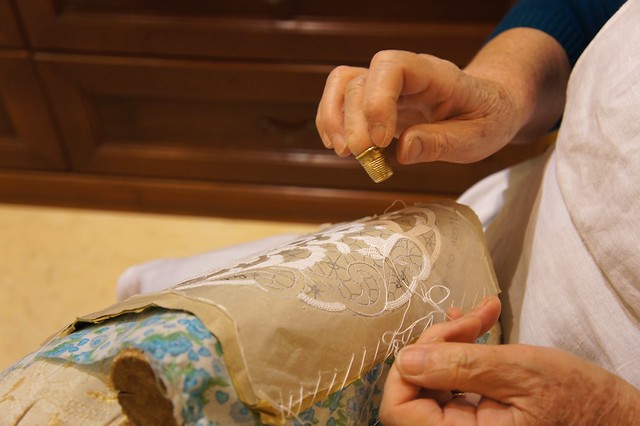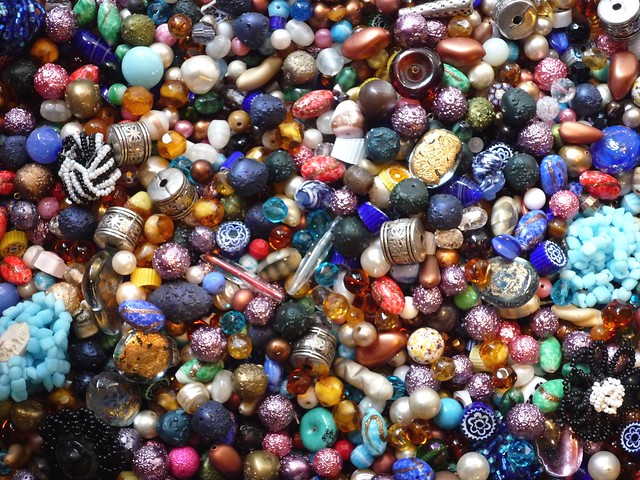Venice has been dominating the news this month, and not only for lighthearted reasons like the Venice Film Festival and the Biennale. La Serenissima is under siege from an increasing number of tourists each year, reaching numbers of daily visitors in the summer months that are unsustainable both ecologically and socially. As mega cruise ships and vacation rentals have moved in, historic shops and long-time residents have moved out, diluting the uniquely Venetian charm that has attracted travelers for centuries.

(Photo by Ciutravel via Flickr)
That said, don’t despair! Venice will always be Venice, and the city is trying to preserve its social fabric by making a number of changes, including limiting the size of cruise ships allowed to dock and the percentage of city residences that can be used for short-term rentals. Slowly the pendulum will swing back toward a vibrant and thriving Floating City, where future generations of visitors and residents alike can bask in its magnificence.

(Photo by Ciutravel via Flickr)
In the meantime, there are ways to visit Venice that support rather than harm its local economy and traditions, giving the pendulum a little nudge in the right direction. Be sure to stay at least a few days when visiting, rather than just stopping by for a day trip. Take in the famous sights, of course, but take time to wander the quieter back streets and explore the smaller churches and museums. Sample cicchetti, take a gondola ride, and head to the outlying islands. And, of course, avoid purchasing cheap tchotchkes, and choose beautiful, one-of-a-kind mementos from Venice’s many artisan workshops and ateliers.
Glass
By far the most famous product from Venice, hand-blown and -shaped glass from the island of Murano is a true art form, as well as a symbol of the city. Venetians have been producing glass since the 10th century, though the threat of fire (or, as some argue, the greater threat of the secrets of Venetian glass being exported by artisans to other Italian cities) prompted the move of the city’s glass workshops to the outlying island of Murano in the Middle Ages. Today, Murano’s Fondamenta dei Vetrai is lined with fine glassmakers turning out traditional and contemporary pieces from their fiery furnaces.

(Photo by Ciutravel via Flickr)
There’s nothing that says Venice like its fine glass, but be particularly cautious when making purchases as the city is flooded with cheap imitations that are not produced by the local craftspeople. To be sure your piece is authentic Murano glass, purchase directly from the workshop or factory, and look for the official Murano trademark. Also, avoid shops with bargain basement prices or sale signs; not every piece of Murano glass necessarily costs hundreds of euros, but it also doesn’t come cheap.
Lace

(Photo by Ciutravel via Flickr)
The island of Murano is known for glass, and Burano, further out in the Venetian lagoon, is known for its lace. Island women have been crafting intricate needle lace, known as Point de Venise, since the Middle Ages. Point de Venise became so prized during the Renaissance that it was worn by noble ladies across Europe, and Burano’s lace school displays examples of fine Burano lace and holds lacemaking demonstrations by local women who keep the traditional techniques alive still today.

(Photo by Ciutravel via Flickr)
As with glass from Murano, handmade lace from Burano has a price tag that reflects the long hours of work that go into each piece…which makes the market ripe for inexpensive machine-made knock-offs produced outside of Venice and sold in the city’s souvenir shops. Purchase your pieces from the handful of upscale linen and lace shops located on Burano to guarantee authenticity and quality.
Textiles
In addition to its intricate lace, Venice has long been known for its sumptuous textiles…gorgeous silks, velvets, and damasks once dressed everything from the fine palace interiors to their wealthy and powerful residents. Today, most Venetians are much more staid in their attire, but the city is still famous for its luxurious fabrics and textiles used for both décor and fashion, and some of the world’s most famous architects and designers look to the city’s flagship companies for their finest materials.
Two of the most historic and famous names in Venetian textiles are Bevilacqua, producers of hand-woven silk velvet made on 18th-century looms, and Rubelli, who produce decorative fabrics and wall coverings for some of the most famous interior designers and architects in the world. More modern, but no less prestigious, Fortuny is known for their high-end quality but bohemian style; for elegantly casual fabrics and home décor, try Chiarastella Cattana.
Jewelry and accessories
With their historic penchant for the luscious silks and velvets, it comes as no surprise that Venetians have long been producers of intricate jewelry and luxurious accessories to set off their finery. You’ll find boutiques from some of the world’s most famous jewelers lining the more fashionable streets in Venice, but take the time to search out local artisans and you won’t be disappointed.

(Photo by Chris via Flickr)
Some of the most prestigious ateliers in the city are Sigfrido Cipolato and Nardi for handcrafted fine jewelry, Daniele and Stefano Attombri for contemporary jewelry made with tiny Venetian glass beads, and Eredi Jovon for traditional Venetian cameos. For shoes, choose a pair of classic gondolier slippers known as furlane or friulane from Piedàterre or handcrafted shoes from Kalimala or Giovanna Zanella.


